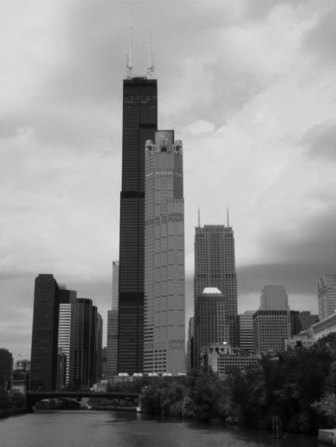599
25
CPTED Considerations
for Office Buildings
The renovation, addition, or new construction of ofce buildings may require the security profes-
sional and owner to collaborate with the design professional in new and challenging ways (Atlas,
1991a,b, 1999a,b,c, 2004, 2005, 2006; BOMA; Building Security Council; Demkin, 2004; Nadel,
2004; San Luis, 1973; Witherspoon, 2002). The security professional may be an employee of the
business responsible for many sectors of security and safety within that business. The architect or
design professional will need many aspects of information from the owner/client and security pro-
fessional to develop the architectural program (see Figure 25.1). The person who can provide criti-
cal information to the architect on security is typically the security director. If no security director
exists, then a trained security professional should be hired to provide assistance.
Even though most of the private sector corporate world provides only the minimal amount of secu-
rity required for common area spaces in ofce buildings (parking and garage controls, lobby guard,
intermittent access control, spotty CCTV), it has traditionally been the responsibility of the tenants to
protect their own assets. What many developers fail to understand is what market value having great
security can bring, even though there are costs associated with these extra features. The single largest
tenant in the United States is the federal government. The federal government currently operates 3.2
billion sq. ft a year in different structures, with approximately 610 million sq. ft of ofce space. The
U.S. Government leases approximately 380 million sq. ft, of which 195 million sq. ft is ofce space.
What does this mean to the developer and architect? All federal-owned and leased space must comply
with the GSA Security Standards as discussed in earlier chapters. The federal government adopted
the ISC Security Standards in nal form in October 2005, and it applies to all federally owned or
leased properties. All new construction and leases must now comply with the security standards, and
leases cannot be renewed unless the standards are met. Whether the space being rented is for a post
ofce, social security ofce, or ATF, INS, or DHS, the space and adjoining common area spaces must
be surveyed for security and have the appropriate corresponding security features for the assessed risk
level. Leased spaces might be required to have building setbacks for blast protection, window protec-
tion, magnetometers and secured lobbies, security guards, identication stations, parking control,
mail screening, dedicated HVAC systems, CCTV, and access control capabilities. Therefore, if there
is any intention to lease or rent space to a government agency in the building, the marketability of that
space will hinge on having basic security features as part of the structure or added on.
CONTENTS
Asset: People ..................................................................................................................................600
Asset: Information .........................................................................................................................601
Asset: Property ...............................................................................................................................605
Additional Security Tips for Designing Ofces and Ofce Buildings ..........................................605
Location of the Security Ofce and Security Equipment .............................................................. 613
Not in the Basement, Please! .................................................................................................... 613
Summary ........................................................................................................................................ 620
References ...................................................................................................................................... 621

600 21st Century Security and CPTED
In order to provide the information in a format that the architect can work with effectively, the
security professional should identify the corporate assets vital to protect. The three most common
assets to businesses are:
People
Information
Property
ASSET: PEOPLE
The resource of people is the rst and most valuable asset to be protected and elaborated on for
developing security criteria for the architect. With any of the three assets, the critical questions in
a needs assessment are:
Who are the users? (Visitors, staff, service crew, sales?)
What can the users do in the building? (Tasks, recreation, work?)
Why are the particular users there? (Ofcial business, guests?)
When do the users get there and leave? (Time, shift, patterns?)
Where can users go in the building? (Horizontal, vertical?)
How can the users get there? (Access methods, circulation?)
The security professional will need to be clear on the implications of each of the answers to these
questions (Table 25.1). It is recommended that a task summary be prepared to give to the architect.
An example of the end product might be as shown in the table.
It might be helpful to develop a scenario for asking the six key questions in the same fashion to
a vice president of a company through to the janitorial cleaning service. The security professional
will then determine the security implications and design implications.
FIGURE 25.1 Skyline of Chicago and the downtown core of ofce buildings.
Get 21st Century Security and CPTED, 2nd Edition now with the O’Reilly learning platform.
O’Reilly members experience books, live events, courses curated by job role, and more from O’Reilly and nearly 200 top publishers.

